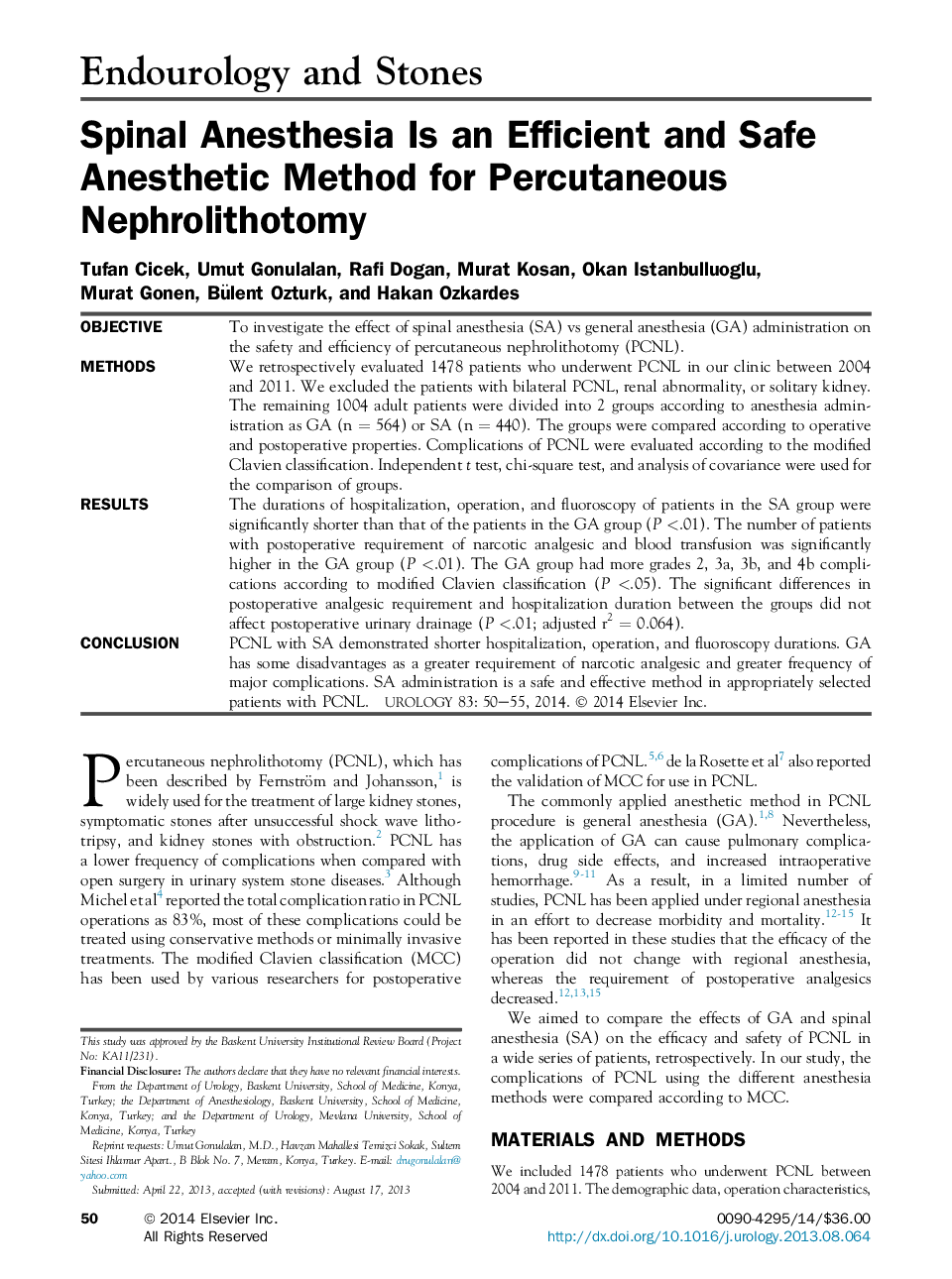| Article ID | Journal | Published Year | Pages | File Type |
|---|---|---|---|---|
| 3898877 | Urology | 2014 | 6 Pages |
ObjectiveTo investigate the effect of spinal anesthesia (SA) vs general anesthesia (GA) administration on the safety and efficiency of percutaneous nephrolithotomy (PCNL).MethodsWe retrospectively evaluated 1478 patients who underwent PCNL in our clinic between 2004 and 2011. We excluded the patients with bilateral PCNL, renal abnormality, or solitary kidney. The remaining 1004 adult patients were divided into 2 groups according to anesthesia administration as GA (n = 564) or SA (n = 440). The groups were compared according to operative and postoperative properties. Complications of PCNL were evaluated according to the modified Clavien classification. Independent t test, chi-square test, and analysis of covariance were used for the comparison of groups.ResultsThe durations of hospitalization, operation, and fluoroscopy of patients in the SA group were significantly shorter than that of the patients in the GA group (P <.01). The number of patients with postoperative requirement of narcotic analgesic and blood transfusion was significantly higher in the GA group (P <.01). The GA group had more grades 2, 3a, 3b, and 4b complications according to modified Clavien classification (P <.05). The significant differences in postoperative analgesic requirement and hospitalization duration between the groups did not affect postoperative urinary drainage (P <.01; adjusted r2 = 0.064).ConclusionPCNL with SA demonstrated shorter hospitalization, operation, and fluoroscopy durations. GA has some disadvantages as a greater requirement of narcotic analgesic and greater frequency of major complications. SA administration is a safe and effective method in appropriately selected patients with PCNL.
